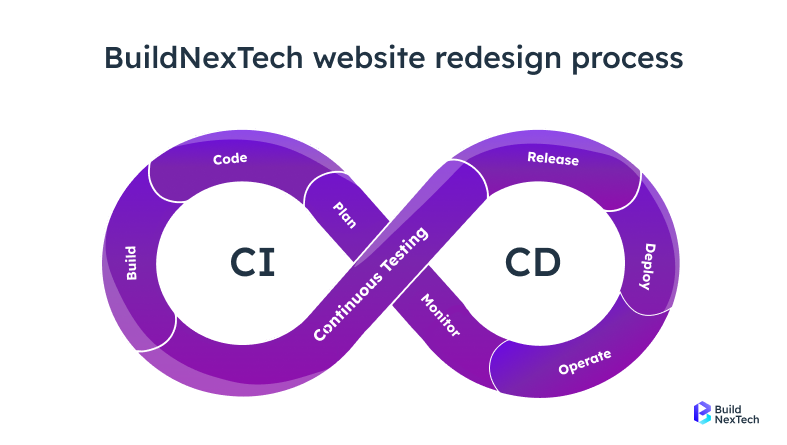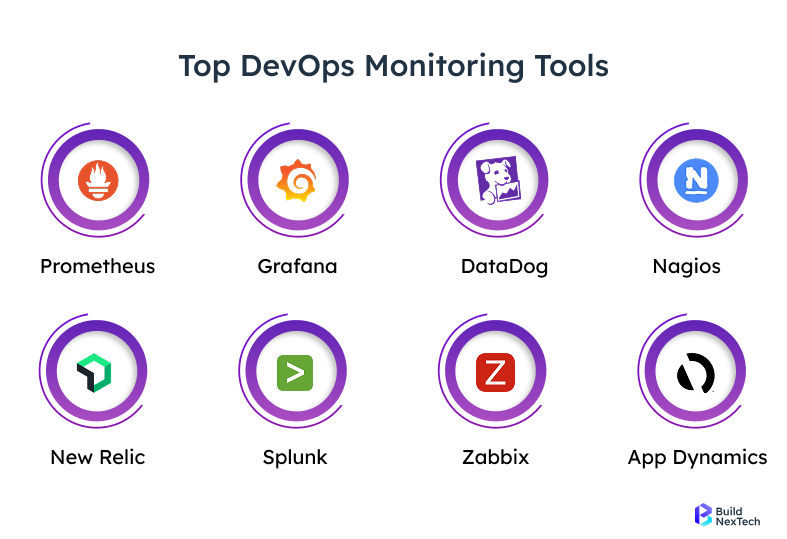In the rapidly evolving world of web development, Continuous Integration (CI) and Continuous Delivery (CD) have become essential for delivering high-quality software at speed. As we look to 2025, understanding the latest trends and best practices in CI/CD will help you stay ahead in a competitive market.
💡Here are the key insights from this article:
📌 Understand the core principles of CI/CD.
📌 Explore the latest CI/CD trends for 2025.
📌 Discover leading tools for building efficient CI/CD pipelines.
📌 Learn best practices for integrating robust security measures for DevOps pipeline.
📌 See how CI/CD directly contributes to faster deployment times.
Understanding CI/CD and Its Role in Web Development
CI/CD stands for Continuous Integration (CI) and Continuous Delivery (CD). These are practices used in software development to help teams deliver software faster and with fewer bugs.
- Continuous Integration (CI) means that developers frequently add small pieces of code to a shared project. This helps detect problems early because the code is tested automatically every time it's added to the project.
- Continuous Delivery (CD) takes it further by automatically sending the tested code to production (the live app). This ensures that changes to the software can be released quickly and reliably.

Role of CI/CD in Web Development
- Automates Repetitive Tasks: CI/CD automates tasks like code integration, testing, and deployment, reducing the need for manual intervention.
- Faster Code Integration: Developers can push changes to the codebase frequently, allowing teams to spot issues earlier in the development process.
- Improves Software Quality: By testing code automatically with each change, CI/CD ensures that bugs are caught early, making the software more reliable.
- Speeds Up Development Cycle: CI/CD helps teams release updates faster by automating parts of the process, leading to quicker feature rollouts.
- Reduces Human Error: With CI/CD automating the integration and delivery of code, the chance of manual errors is greatly reduced.
- Faster Feedback for Developers: Developers get feedback immediately after their code is integrated, allowing them to fix issues faster.
- Continuous Delivery of Features: CI/CD makes it possible to release new features and updates continuously, keeping applications fresh and up-to-date.
- Scalable and Reliable Deployments: CI/CD makes deployments more predictable and reliable, reducing downtime and ensuring that updates are deployed smoothly.
- Supports Collaboration: With continuous integration, multiple developers can work on different parts of the application without interfering with each other’s work. It encourages collaboration in teams.
- Improves User Experience: With faster and more reliable updates, users experience fewer disruptions and enjoy new features more frequently.
CI/CD Trends in 2025
(CI/CD) is being shaped by emerging technologies and innovative practices. In 2025, we’ll see a greater emphasis on automation, scalability, and real-time insights to improve efficiency, reduce downtime, and maintain high-quality deployments. From AI-powered automation to the rise of cloud-native pipelines and serverless architecture, these trends are transforming how teams build, test, and deliver software at scale.
In this section, we’ll explore the key CI/CD trends to watch in 2025 and how they are revolutionizing development workflows.
The Rise of AI/ML in CI/CD for Predictive Automation
AI/ML-powered predictive automation tools are transforming how CI/CD pipelines operate. By analyzing historical data, these tools can predict potential failures, optimize deployment workflows, and enhance build quality. Here’s how AI/ML integration is making an impact:
- AI/ML-powered predictive automation tools to analyze historical data and predict failures.
- Optimizes deployment workflows and improves build quality.
- Recommends adjustments to enhance deployment efficiency, reducing downtime and minimizing human error.
- Improves CI/CD pipeline resilience and agility, handling complex workflows in fast-evolving markets.
- Provides developers with quick feedback and insights into potential security vulnerabilities.
Serverless CI/CD: What You Need to Know
Serverless CI/CD is revolutionizing development workflows by reducing the need for infrastructure management. By focusing on software delivery rather than server maintenance, teams can achieve better scalability and efficiency. Here’s how serverless architecture benefits DevOps teams:
- Serverless CI/CD reduces infrastructure management, lowering development costs and increasing scalability.
- Focuses on development, testing, and software delivery rather than managing servers.
- Supports rapid iterations, reducing errors during deployment and increasing deployment frequency.
- Enables teams to concentrate on building high-quality software instead of infrastructure management.
The Future of Cloud-Native CI/CD Pipeline
Cloud-native CI/CD pipelines are becoming the go-to solution for DevOps teams seeking high availability, rapid scaling, and global deployments. By leveraging cloud services, teams can build and deploy with greater flexibility and speed. Here's why cloud-native pipelines are the future:
- Increased adoption of cloud-native CI/CD tools supporting rapid scaling, high availability, and global deployments.
- Automates testing, integrates deployments seamlessly, and leverages cloud services for faster deployments.
- Cloud service providers (e.g., Google Cloud, Azure) offer integrated security tools for maintaining consistency across environments.
- Ensures pipeline configurations align with production for greater stability.
Advanced CI/CD Monitoring and Observability Tools
As CI/CD pipelines become more complex, monitoring and observability tools will be critical in maintaining pipeline health. These tools allow teams to track deployment progress, identify issues early, and ensure the quality of their builds. Here’s how advanced monitoring improves CI/CD performance:
- Real-time monitoring of deployments, automated testing feedback, and security scans for high-quality pipelines.
- Enhanced visibility to identify issues early, enabling proactive actions to resolve configuration drift and minimize failures.
- Provides continuous improvement via feedback loops and early detection of flaky tests and static code analysis failures.
CI/CD for Microservices: Managing Complexity at Scale
Managing the complexity of microservices architectures requires specialized CI/CD tools that support parallel testing, containerization, and orchestration. These tools help ensure reliable and efficient deployments in microservices environments. Here’s how CI/CD tools are adapting to microservices:
- Supports parallel testing, containerization, and orchestration platforms for smooth deployments in microservices architectures.
- Handles frequent integrations and continuous testing to ensure reliable microservices deployments.
- Open-source projects and third-party components simplify complex workflows, promoting security and code reviews for quality assurance.
The Evolution of CI/CD: Why It's Crucial in 2025
Continuous Integration and Continuous Deployment (CI/CD) have transformed from basic automation tools into strategic pillars of software development. As technology advances and development environments grow more complex, CI/CD has become essential for delivering software that’s fast, reliable, and scalable. Here's why it's even more critical in 2025:
- Faster Development Cycles: CI/CD enables teams to push code changes frequently with minimal risk, accelerating time-to-market.
- Improved Code Quality: Automated testing, linting, and validation checks reduce bugs before deployment, ensuring cleaner code.
- Cloud-Native & Serverless Ready: With the rise of microservices and serverless architecture, modern CI/CD pipelines are built for dynamic, scalable deployment environments.
- Real-Time Monitoring & Feedback: Continuous monitoring tools integrated into CI/CD workflows help catch performance or security issues early.
- Enhanced Security & Compliance: Modern CI/CD supports secure coding practices, secrets management, and policy enforcement throughout the pipeline.
- Better Collaboration & Integration: Developers, testers, and operations teams work more efficiently with integrated tools and version control systems.
Key Components of a CI/CD Pipeline in 2025
To ensure successful deployments, the key components of a CI/CD pipeline include:
- Automated Testing: Automated tests ensure code quality and catch bugs early in the development process, reducing the risk of errors in production.
- Continuous Integration: The process of frequently merging code changes into a shared repository ensures that bugs and conflicts are identified and resolved quickly.
- Continuous Deployment: Continuous deployment automates the release process, ensuring that every code change is deployed to production seamlessly.
- Real-Time Feedback: Feedback loops allow developers to receive immediate insights into code changes, enabling faster issue resolution.
Top CI/CD Tools to Consider in 2025
As DevOps practices continue to evolve, CI/CD tools are becoming more critical than ever. These tools not only streamline the development process but also ensure that code is continuously integrated, tested, and delivered with minimal disruptions. In 2025, the focus will be on tools that can help automate workflows, improve code quality, and enable faster release cycles, making them an essential part of any development pipeline.
Key DevOps Automation Tools to Boost Efficiency in 2025
DevOps teams need reliable tools to ensure efficient and automated processes. In 2025, these tools will play a critical role in speeding up delivery cycles while maintaining high code quality.
- GitHub Actions & Travis CI: These tools will continue to be pivotal in automating tests, builds, deployments, and releases, significantly improving team efficiency and code quality.
- Cloud Integrations: The continued integration with platforms like AWS, Azure, and Google Cloud will provide robust infrastructure automation, enabling scalable and efficient DevOps pipelines.
Top DevOps Monitoring Tools to Keep Your Systems in Check

In 2025, DevOps monitoring tools will be essential in maintaining CI/CD pipeline health, ensuring quick troubleshooting, and preventing issues that could affect users.
- Prometheus: Provides real-time monitoring of CI/CD pipelines, helping teams quickly detect performance issues and prevent system downtime.
- Datadog: Delivers comprehensive monitoring and observability, enabling teams to maintain a high-quality deployment pipeline with better insight into bottlenecks and overall pipeline performance.
Azure DevOps Tools: Best Practices for Seamless Integration
Azure DevOps will continue to be a powerful platform for managing the entire CI/CD lifecycle. Best practices in 2025 focus on efficient integration with Azure services, ensuring smooth workflows and deployments.
- Automating Builds, Testing, and Deployments: Leverage Azure DevOps tools to automate each stage of the DevOps pipeline, ensuring continuous integration and continuous delivery.
- Environment Consistency: Maintain identical environments across all stages of the pipeline for better stability and fewer environment-specific issues.
AWS DevOps Tools: Harnessing Cloud Power for Continuous Deployment
AWS offers a suite of DevOps tools that help streamline the entire CI/CD process. These tools will remain crucial in scaling cloud deployments and minimizing deployment time in 2025.
- AWS CodePipeline & AWS CodeBuild: Automate the full CI/CD lifecycle, from code commit to deployment, ensuring faster time to market and scalability with AWS cloud resources.
Best Practices for DevOps Security in the CI/CD Pipeline
Security is a paramount concern in the CI/CD pipeline. In 2025, DevOps teams will continue to integrate security measures directly into their CI/CD practices to ensure secure, fast, and reliable deployments.
Implementing Secure Code Scanning in Your CI/CD Pipeline
Integrating secure code scanning tools into the CI/CD pipeline helps teams identify vulnerabilities early in the development lifecycle, ensuring a secure software delivery process.
- SonarQube: Continuously scans source code for security vulnerabilities, allowing teams to address potential risks before the code reaches production.
- Regular Scanning: Ensures vulnerabilities are caught before deployment, improving the overall security of the software delivery lifecycle.
Automating Security Testing in DevOps for Early Detection
Automating security tests ensures that vulnerabilities are detected and addressed as early as possible in the development cycle.
- OWASP ZAP & Burp Suite: These tools automate security testing, including penetration testing, to identify vulnerabilities in real-time.
- Parallel Testing: Supports simultaneous tests to maintain high development velocity while ensuring thorough security coverage.
Integrating Identity and Access Management (IAM) in DevOps
IAM solutions are crucial for enforcing role-based access control within CI/CD pipelines, ensuring that only authorized personnel can access or modify code.
- IAM Solutions: Integrate IAM tools to protect deployment environments, ensuring operations teams follow strict access policies that safeguard sensitive data.
- Enforced Role-Based Access: Prevents unauthorized changes, enhancing security and ensuring only authorized users can deploy code.
Best Practices for Securing Secrets and Credentials in CI/CD
Protecting sensitive information like API keys, credentials, and secrets is critical to securing both development environments and production systems.
- HashiCorp Vault: A centralized secret management solution that securely stores and retrieves sensitive data, reducing manual errors and security risks.
- Controlled Access: Only authorized users can access sensitive credentials, ensuring that secrets are safeguarded throughout the pipeline.
Enhancing DevOps Security with Compliance Automation Tools
Automating compliance checks ensures that your CI/CD pipeline meets security and regulatory requirements without manual oversight.
- Qualys & Tenable.io: Automatically verify that deployments comply with industry security standards and regulatory requirements, ensuring secure software delivery.
- Compliance Checks: Continuously monitor the pipeline for compliance violations, reducing the risk of security breaches.
Proactive Monitoring and Incident Response in DevOps Pipelines
Proactive monitoring ensures that teams can quickly identify issues before they escalate, maintaining the health and security of CI/CD pipelines.
- Splunk & New Relic: These tools provide real-time insights into the performance and security of CI/CD pipelines, allowing for rapid incident response.
- Early Incident Detection: Quickly identifies issues before they cause downtime, enabling teams to respond swiftly and maintain system reliability.
Conclusion: Future Trends in CI/CD and Web Development
As we move into 2025, the role of CI/CD in web development will only grow more important. With the rise of AI/ML, serverless computing, and cloud-native technologies, CI/CD pipelines will become more efficient, secure, and automated. By adopting these cutting-edge technologies, organizations can maintain a competitive edge, reduce deployment times, and deliver high-quality software faster than ever before. CI/CD will continue to evolve, helping development teams keep up with the growing demands of modern web development.
Why BuildNexTech?
At buildNexTech, we understand the critical importance of these advancements. As a leading web development company, we specialize in providing comprehensive website development services tailored to your unique needs. Our expertise extends to offering custom web development services and custom web application development, ensuring your online presence is robust, scalable, and future-proof. Partner with buildNexTech, one of the top web development companies, to leverage cutting-edge CI/CD practices and elevate your digital success.
People Also Ask
How do I choose the right CI/CD tool for my web development project?
Choose a CI/CD tool based on your project's technology stack, team size, budget, and desired features (e.g., integrations, scalability).
How do I integrate monitoring and observability into my CI/CD pipeline?
Integrate monitoring and observability by adding automated steps in your pipeline to deploy agents, configure dashboards, and send alerts on key metrics.
What impact does CI/CD have on testing cycles in web development?
Integrate monitoring and observability by adding automated steps in your pipeline to deploy agents, configure dashboards, and send alerts on key metrics.
How do I handle versioning in a CI/CD pipeline?
Handle versioning in a CI/CD pipeline by automating semantic versioning (e.g., using Git tags) and applying it consistently to builds and deployments.


























.webp)
.webp)
.webp)

